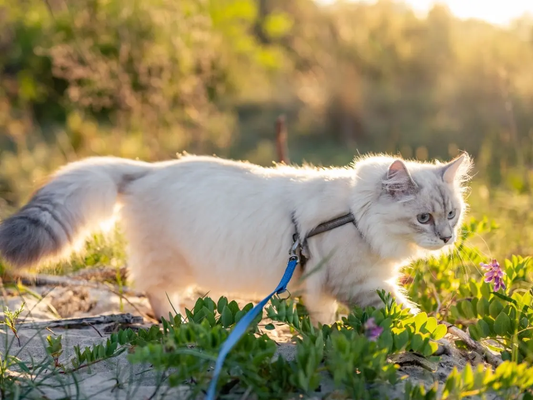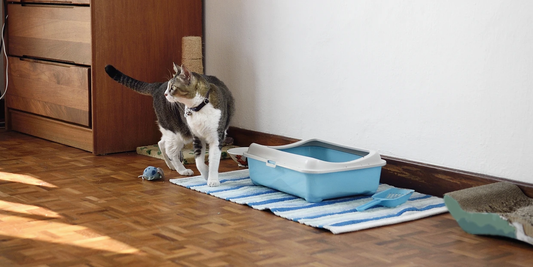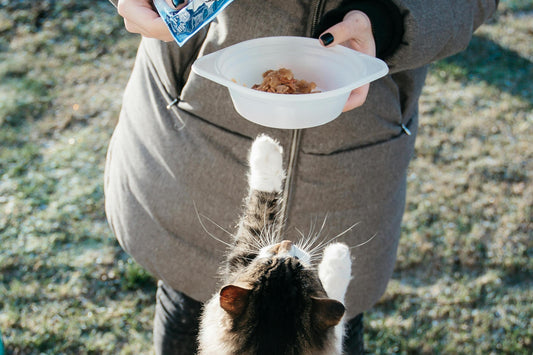Introduction:
Welcome to a guide dedicated to the ocular health of your beloved feline companion. Cats are known for their keen eyesight, but just like humans, they can encounter various eye issues. Understanding these problems and knowing the solutions is crucial for maintaining your cat's quality of life. In this article, we'll delve into the top 15 common cat eye problems and provide actionable solutions to ensure your cat's vision remains sharp and clear.
Top 15 Common Cat Eye Problems and Solutions
Eye Infections:
Eye infections in cats can be caused by bacteria, viruses, or fungi. Symptoms include redness, discharge, and squinting. It's essential to seek veterinary care promptly to prevent the infection from worsening.
Eye infections are a prevalent concern among cat owners. These infections can range from mild conjunctivitis to more severe conditions like keratitis. Treatment typically involves antibiotics or antiviral medications, depending on the underlying cause.
Corneal Ulcers:
Corneal ulcers are painful sores on the outer layer of the eye. They can result from trauma, infections, or underlying health conditions. Prompt treatment is necessary to prevent complications such as impaired vision or even blindness.
Corneal ulcers can occur due to various reasons, including scratches from foreign objects or underlying health issues like dry eye syndrome. Treatment often involves topical medications and protective measures to promote healing and prevent further damage to the cornea.
Conjunctivitis:
Conjunctivitis, or pink eye, is characterized by inflammation of the conjunctiva, the thin membrane covering the eye. It can be caused by allergies, infections, or irritants. Treatment may include eye drops, antibiotics, or antihistamines, depending on the underlying cause.
Conjunctivitis is a common condition that can affect cats of all ages. Symptoms include redness, discharge, and excessive tearing. While mild cases may resolve on their own, persistent or severe conjunctivitis requires veterinary attention to determine the underlying cause and appropriate treatment.
Glaucoma:
Glaucoma is a serious eye condition characterized by increased pressure within the eye, leading to optic nerve damage and vision loss. Symptoms include dilated pupils, eye pain, and cloudy corneas. Early detection and treatment are crucial to prevent irreversible vision impairment.
Glaucoma is a potentially sight-threatening condition that requires immediate veterinary care. Treatment aims to reduce intraocular pressure and preserve remaining vision through medications or surgical interventions like laser therapy or drainage implants.
Cataracts:
Cataracts are opacities that develop within the lens of the eye, causing vision impairment. They can be congenital or develop due to aging, diabetes, or trauma. Surgical removal is often necessary to restore vision in affected cats.
Cataracts are a common cause of vision loss in older cats. Symptoms include cloudy or bluish discoloration of the eyes and difficulty navigating obstacles. While cataracts may initially cause minimal visual impairment, they can progress rapidly without intervention, leading to complete blindness.
Tear Stains:
Tear stains are dark streaks that form beneath a cat's eyes due to excessive tearing. They are often caused by blocked tear ducts, eye infections, or shallow eye sockets. Regular cleaning and addressing the underlying cause can help reduce tear stains and promote ocular health.
Tear stains are a cosmetic concern for many cat owners, but they can also indicate underlying eye problems. Persistent tear stains may require veterinary evaluation to rule out conditions like eye infections or anatomical abnormalities. Treatment may involve tear duct flushing, dietary adjustments, or topical medications.
Foreign Objects:
Foreign objects such as dust, debris, or plant material can become lodged in a cat's eye, causing irritation and discomfort. Prompt removal of the object and gentle cleansing of the eye are essential to prevent corneal abrasions or infections.
Cats are curious creatures prone to exploring their environment, which can sometimes lead to eye injuries from foreign objects. Owners should be vigilant and inspect their cat's eyes regularly for signs of irritation or foreign bodies. If a foreign object is detected, avoid attempting to remove it yourself and seek veterinary assistance promptly.
Dry Eye Syndrome:
Dry eye syndrome, or keratoconjunctivitis sicca, occurs when the eyes fail to produce an adequate amount of tears, leading to dryness and discomfort. Symptoms include redness, discharge, and squinting. Treatment involves artificial tear supplements and medications to stimulate tear production.
Dry eye syndrome is a common condition in cats, particularly certain breeds predisposed to eye problems. It can result from immune-mediated diseases, medication side effects, or aging. Early diagnosis and management are essential to prevent complications like corneal ulceration and vision loss.
Entropion:
Entropion is a congenital or acquired eyelid abnormality where the eyelid rolls inward, causing the eyelashes to rub against the cornea. This can lead to corneal abrasions, ulcers, and secondary infections. Surgical correction is often necessary to alleviate discomfort and prevent vision loss.
Entropion is more commonly seen in breeds with facial folds or short noses, but it can occur in any cat. Symptoms include excessive tearing, squinting, and eye discharge. Veterinary evaluation is necessary to determine the severity of the condition and recommend appropriate treatment, which may involve surgical correction.
Uveitis:
Uveitis is inflammation of the uvea, the middle layer of the eye, which can be caused by infections, trauma, or underlying systemic diseases. Symptoms include redness, light sensitivity, and vision changes. Treatment aims to control inflammation and address the underlying cause.
Uveitis is a serious condition that requires prompt veterinary attention to prevent complications like secondary glaucoma or retinal detachment. Treatment may involve topical or systemic medications to reduce inflammation, along with supportive care to manage pain and discomfort.
Cherry Eye:
Cherry eye is a protrusion of the gland of the third eyelid, resulting in a red, fleshy mass at the inner corner of the eye. While not typically painful, cherry eye can cause irritation and predispose the eye to dryness or infections. Surgical correction may be necessary to reposition the gland and restore normal tear production.
Cherry eye is a common condition seen in young cats, particularly certain breeds with a genetic predisposition. While it may initially resolve on its own, surgical intervention is often recommended to prevent long-term complications and maintain ocular health.
Retinal Diseases:
Retinal diseases encompass a range of conditions affecting the retina, the light-sensitive tissue lining the back of the eye. These diseases can lead to vision loss or blindness if left untreated. Management varies depending on the specific diagnosis and may include medications, dietary supplements, or surgical interventions.
Retinal diseases can have various causes, including genetic predisposition, trauma, or underlying systemic conditions like hypertension or diabetes. Symptoms may include changes in vision, dilated pupils, or abnormal eye movements. Early detection and intervention are crucial to preserve remaining vision and prevent further deterioration.
Eye Trauma:
Eye trauma in cats can result from accidents, fights, or falls, leading to injuries such as corneal lacerations, globe rupture, or blunt trauma. Prompt veterinary care is essential to assess the extent of the injury and prevent complications like infection or vision loss.
Eye trauma requires immediate attention to prevent permanent damage and preserve vision. Owners should avoid attempting to treat eye injuries at home and seek veterinary care promptly. Treatment may involve medications, surgical repair, or supportive care, depending on the nature and severity of the trauma.
Hypertension:
Hypertension, or high blood pressure, can lead to ocular complications in cats, including retinal damage, hemorrhage, or detachment. Symptoms may include dilated pupils, vision changes, or sudden blindness. Management involves addressing the underlying cause and controlling blood pressure through medications and dietary modifications.
Hypertension is a common concern in older cats, particularly those with underlying health conditions like kidney disease or hyperthyroidism. Regular blood pressure monitoring and veterinary check-ups are essential for early detection and intervention. Treatment aims to minimize ocular complications and preserve visual function.
Systemic Diseases:
Systemic diseases such as diabetes, feline leukemia virus (FeLV), and feline immunodeficiency virus (FIV) can have ocular manifestations in cats. These may include cataracts, retinopathy, or uveitis. Management involves addressing the underlying disease and providing supportive care to manage ocular symptoms.
Systemic diseases can impact multiple organs, including the eyes, leading to various ocular complications. Regular veterinary care and monitoring are essential for cats with underlying health conditions to detect and manage ocular manifestations promptly. Treatment may involve medications, dietary adjustments, or lifestyle modifications to improve overall health and quality of life.
FAQs (Frequently Asked Questions)
Are Cat Eye Problems Common?
Yes, cat eye problems are relatively common and can range from mild irritations to serious conditions requiring medical intervention. Regular veterinary check-ups and proper eye care can help prevent and manage these issues effectively.
Can I Use Human Eye Drops for My Cat's Eye Infection?
No, it's not recommended to use human eye drops for cat eye infections without veterinary guidance. Some ingredients in human medications can be harmful to cats. Always consult with your veterinarian before administering any medications to your cat.
How Can I Prevent Eye Problems in My Cat?
Regular veterinary check-ups, proper nutrition, and maintaining a clean living environment can help prevent many eye problems in cats. Additionally, keeping your cat indoors can reduce the risk of injuries and infections from outdoor hazards.
Is Surgery the Only Treatment for Cataracts in Cats?
Surgery is often the most effective treatment for cataracts in cats, especially if the condition is significantly affecting their vision. However, your veterinarian will assess your cat's overall health and discuss all available treatment options based on their specific needs.
Can Stress Cause Eye Problems in Cats?
Yes, stress can contribute to the development or exacerbation of eye problems in cats. Providing a safe and comfortable environment, regular playtime, and minimizing changes to their routine can help reduce stress and promote overall well-being.
When Should I Seek Veterinary Care for My Cat's Eye Problem?
You should seek veterinary care promptly if you notice any changes in your cat's eye appearance or behavior, such as redness, discharge, squinting, or rubbing at the eyes. Early intervention can prevent complications and ensure the best possible outcome for your cat's ocular health.
Conclusion:
Your cat's eyes are windows to their world, and ensuring their ocular health is vital for their overall well-being. By familiarizing yourself with the top 15 common cat eye problems and solutions outlined in this guide, you can better recognize potential issues and take proactive steps to address them. Remember, early detection and prompt veterinary care are key to preserving your feline friend's vision and quality of life.
Remember, a healthy cat is a happy cat, so prioritize their eye health today!








